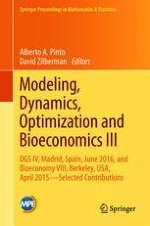
2018 | OriginalPaper | Buchkapitel
Optimal Regional Regulation of Animal Waste
verfasst von : Antti Iho, Doug Parker, David Zilberman
Erschienen in: Modeling, Dynamics, Optimization and Bioeconomics III
Aktivieren Sie unsere intelligente Suche, um passende Fachinhalte oder Patente zu finden.
Wählen Sie Textabschnitte aus um mit Künstlicher Intelligenz passenden Patente zu finden. powered by
Markieren Sie Textabschnitte, um KI-gestützt weitere passende Inhalte zu finden. powered by